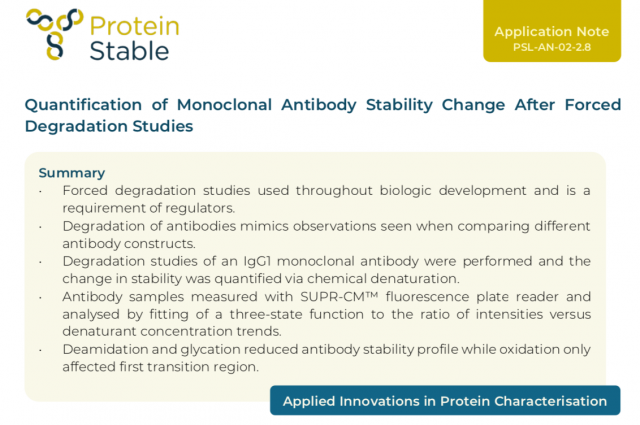Application Note: Forced degradation studies are used routinely within biologic development including accelerated stability studies. They are also useful in understanding the stability of biologic on a more fundamental level.
Forced degradation studies are used routinely within biologic development including accelerated stability studies. They are also useful in understanding the stability of biologic on a more fundamental level. In this application note forced degradation studies are used to demonstrate the kinds of changes that can be observed when measuring the stability of a monoclonal antibody, via chemical denaturation. An IgG1 monoclonal antibody was subjected to a deamidation, glycation and oxidation forced degradation studies to observe the changes in antibody stability when compared to the unmodified antibody sample. The stability of the monoclonal antibody sample was quantified via chemical denaturation, were the unfolding process was monitored by measuring the fluorescence spectrum with the SUPR-CM plate reader. Quantification of antibody stability was achieved by obtaining Gibbs Free Energy and mid-point of inflection values via fitting of a three-state function to the ratio of intensities (355 nm and 330 nm). The deamidation sample shows a large decease in stability as the mid-point on inflection values are significantly lower when compare to the unmodified antibody sample. A similar case is observed for the glycation samples as the mid-point of inflection values are significantly lower than the control sample. When subjected to the oxidation forced degradation study the resultant change in monoclonal antibody stability showed a change to the first transition region only. The change in Gibbs Free Energy and mid-point of inflection values for the second transition region where not significantly different to the control sample’s values.

